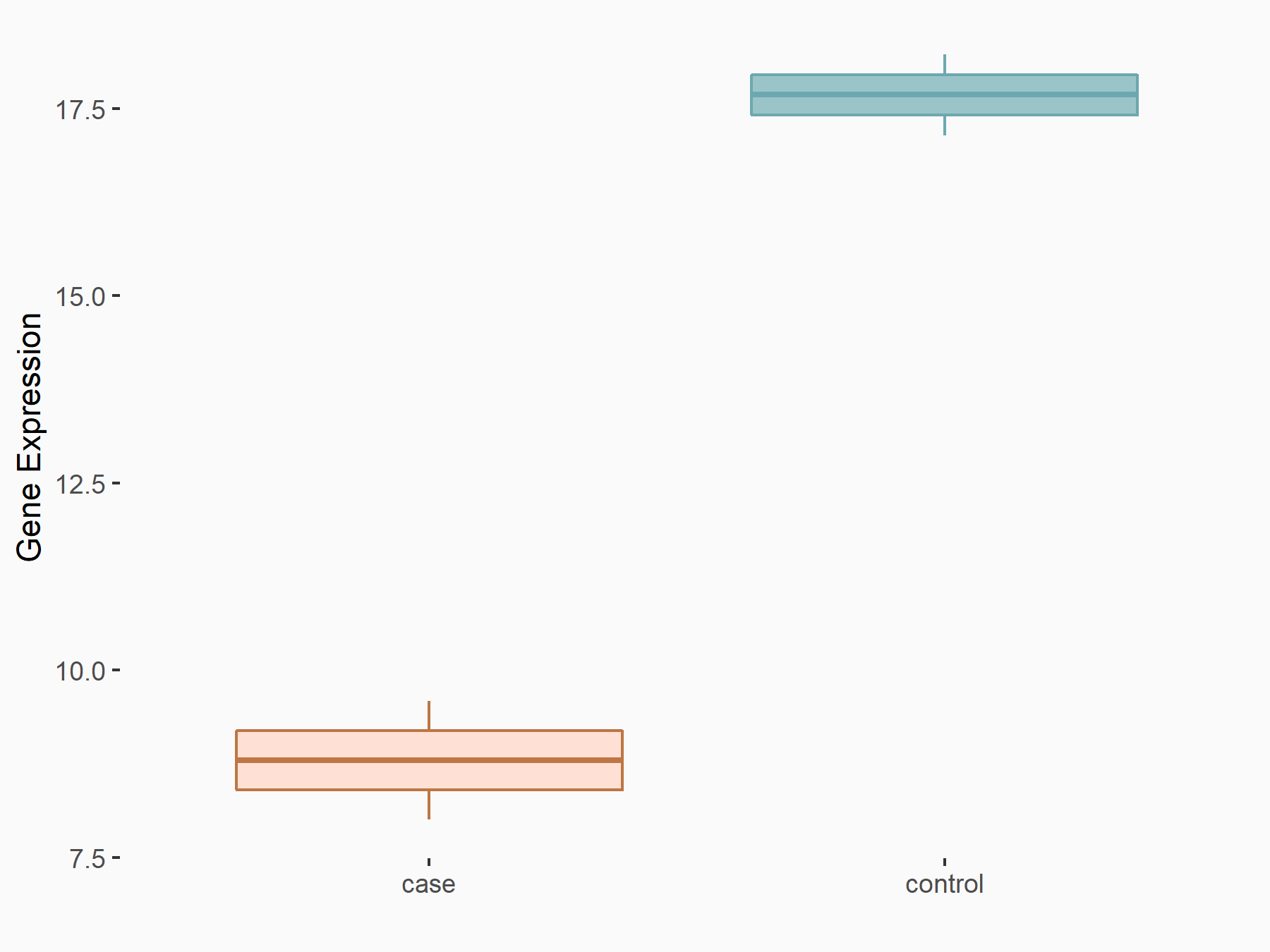m6A Target Gene Information
General Information of the m6A Target Gene (ID: M6ATAR00349)
Full List of m6A Methylation Regulator of This Target Gene and Corresponding Disease/Drug Response(s)
GRIN1
can be regulated by the following regulator(s), and cause disease/drug response(s). You can browse detail information of regulator(s) or disease/drug response(s).
Browse Regulator
Browse Disease
Fat mass and obesity-associated protein (FTO) [ERASER]
| Representative RNA-seq result indicating the expression of this target gene regulated by FTO | ||
| Cell Line | UMRC2 cell line | Homo sapiens |
|
Treatment: FTO knockdown UMRC2 cells
Control: Wild type UMRC2 cells
|
GSE139123 | |
| Regulation |
  |
logFC: -9.35E-01 p-value: 3.38E-05 |
| More Results | Click to View More RNA-seq Results | |
| In total 1 item(s) under this regulator | ||||
| Experiment 1 Reporting the m6A Methylation Regulator of This Target Gene | [1] | |||
| Response Summary | Decreased m6A in dopaminergic cells by overexpressing a nucleic acid demethylase, FTO, or by m6A inhibitor. m6A reduction could induce the expression of Glutamate receptor ionotropic, NMDA 1 (NMDAR1/GRIN1), and elevate oxidative stress and Ca2+ influx, resulting in dopaminergic neuron apoptosis. m6A modification plays a vital role in the death of dopaminergic neuron, which provides a novel view of mRNA methylation to understand the epigenetic regulation of Parkinson's disease. | |||
| Target Regulation | Up regulation | |||
| Responsed Disease | Parkinson disease | ICD-11: 8A00 | ||
| In-vitro Model | HEK293T | Normal | Homo sapiens | CVCL_0063 |
| PC-12 | Lung papillary adenocarcinoma | Homo sapiens | CVCL_S979 | |
| SH-SY5Y | Neuroblastoma | Homo sapiens | CVCL_0019 | |
| In-vivo Model | Two weeks after the stereotaxic surgery, all the animals were intraperitoneally injected with apomorphine at a dose of 0.5 mg/kg to induce the contralateral rotations. Ten minutes after the injection, a video was used to record the rotations of each rat for 20 min. Only those 6-OHDA induced rats showing robust contralateral turning (>7 turns/min) that were injected with 6-OHDA were used in subsequent experiments. | |||
Parkinson disease [ICD-11: 8A00]
| In total 1 item(s) under this disease | ||||
| Experiment 1 Reporting the m6A-centered Disease Response | [1] | |||
| Response Summary | Decreased m6A in dopaminergic cells by overexpressing a nucleic acid demethylase, FTO, or by m6A inhibitor. m6A reduction could induce the expression of Glutamate receptor ionotropic, NMDA 1 (NMDAR1/GRIN1), and elevate oxidative stress and Ca2+ influx, resulting in dopaminergic neuron apoptosis. m6A modification plays a vital role in the death of dopaminergic neuron, which provides a novel view of mRNA methylation to understand the epigenetic regulation of Parkinson's disease. | |||
| Responsed Disease | Parkinson disease [ICD-11: 8A00] | |||
| Target Regulator | Fat mass and obesity-associated protein (FTO) | ERASER | ||
| Target Regulation | Up regulation | |||
| In-vitro Model | HEK293T | Normal | Homo sapiens | CVCL_0063 |
| PC-12 | Lung papillary adenocarcinoma | Homo sapiens | CVCL_S979 | |
| SH-SY5Y | Neuroblastoma | Homo sapiens | CVCL_0019 | |
| In-vivo Model | Two weeks after the stereotaxic surgery, all the animals were intraperitoneally injected with apomorphine at a dose of 0.5 mg/kg to induce the contralateral rotations. Ten minutes after the injection, a video was used to record the rotations of each rat for 20 min. Only those 6-OHDA induced rats showing robust contralateral turning (>7 turns/min) that were injected with 6-OHDA were used in subsequent experiments. | |||